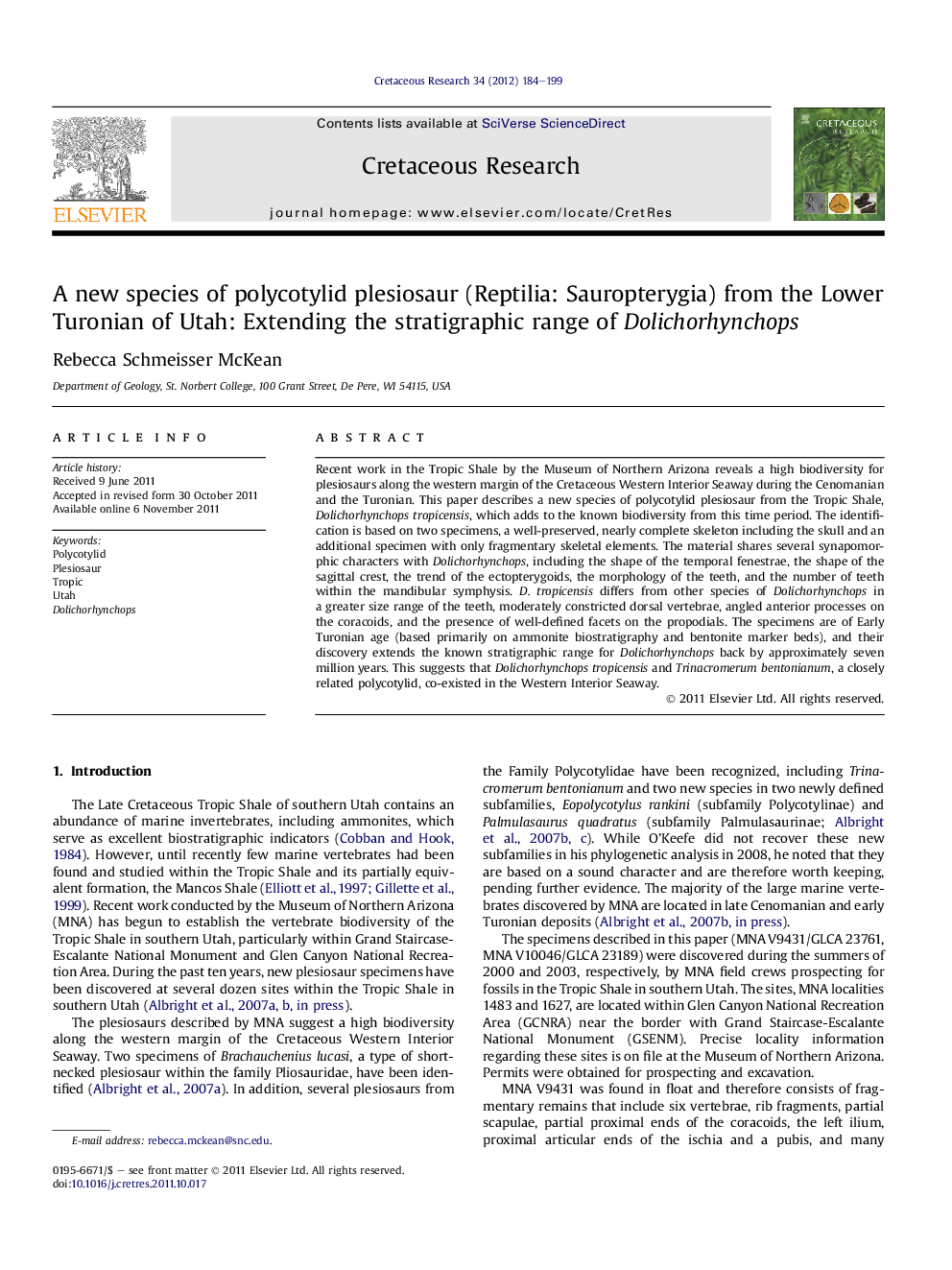| Article ID | Journal | Published Year | Pages | File Type |
|---|---|---|---|---|
| 4747376 | Cretaceous Research | 2012 | 16 Pages |
Recent work in the Tropic Shale by the Museum of Northern Arizona reveals a high biodiversity for plesiosaurs along the western margin of the Cretaceous Western Interior Seaway during the Cenomanian and the Turonian. This paper describes a new species of polycotylid plesiosaur from the Tropic Shale, Dolichorhynchops tropicensis, which adds to the known biodiversity from this time period. The identification is based on two specimens, a well-preserved, nearly complete skeleton including the skull and an additional specimen with only fragmentary skeletal elements. The material shares several synapomorphic characters with Dolichorhynchops, including the shape of the temporal fenestrae, the shape of the sagittal crest, the trend of the ectopterygoids, the morphology of the teeth, and the number of teeth within the mandibular symphysis. D. tropicensis differs from other species of Dolichorhynchops in a greater size range of the teeth, moderately constricted dorsal vertebrae, angled anterior processes on the coracoids, and the presence of well-defined facets on the propodials. The specimens are of Early Turonian age (based primarily on ammonite biostratigraphy and bentonite marker beds), and their discovery extends the known stratigraphic range for Dolichorhynchops back by approximately seven million years. This suggests that Dolichorhynchops tropicensis and Trinacromerum bentonianum, a closely related polycotylid, co-existed in the Western Interior Seaway.
► A new species of polycotylid plesiosaur from the Tropic Shale is described. ► The new species is named Dolichorhynchops tropicensis. ► This species extends the stratigraphic range of Dolichorhynchops. ► The stratigraphic ranges of Dolichorhynchops and Trinacromerum overlap.
